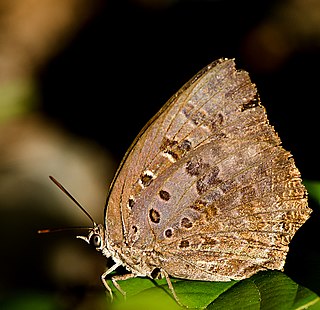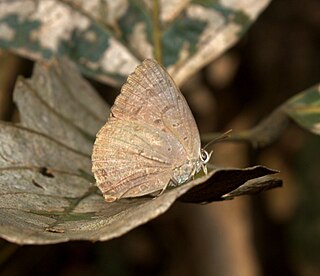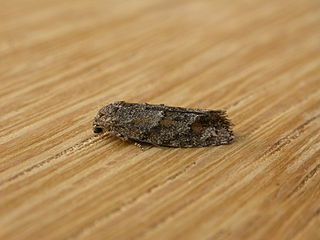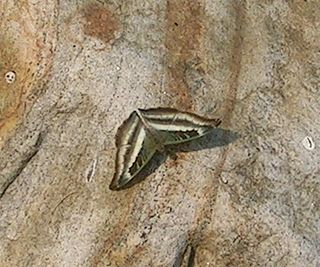
Caprona alida, the yellow spotted angle or Alida angle, is a butterfly belonging to the family Hesperiidae. It is found in India, Sri Lanka, Myanmar, Thailand, Vietnam, Laos, Hainan and southern China. It was first described by Lionel de Nicéville in 1891.

Bindahara phocides, the plane, is a small butterfly found Indomalayan and Australasian realms that belongs to the lycaenids or blues family.

Tarucus theophrastus, the common tiger blue, pointed Pierrot or African Pierrot, is a small butterfly found in the Old World tropics. It belongs to the lycaenids or blues family.

Chilades parrhasius, the small Cupid, is a small butterfly that belongs to the lycaenids or blues family. It is found in Nepal,southern Turan, southern Ghissar, Iran, Afghanistan, Pakistan, Sri Lanka and southern, central and north-west India.

Jamides celeno, the common cerulean, is a small butterfly found in Indomalayan realm belonging to the lycaenids or blues family. The species was first described by Pieter Cramer in 1775.

Nacaduba pactolus, the large four-line blue, is a species of lycaenid butterfly found in Indomalayan realm.

Neptis nata, the clear sailer or dirty sailer, is a species of nymphalid butterfly found in south and southeast Asia.

Arhopala amantes, the large oakblue, is a species of lycaenid or blue butterfly found in Asia.

Arhopala atrax, the dark broken-band oakblue or Indian oakblue, is a species of lycaenid or blue butterfly found in the Indomalayan realm.

Enispe cycnus, the blue caliph, is a species of nymphalid butterfly found in Southeast Asia.

Rathinda is a butterfly genus in the family Lycaenidae. It consists of a single species, Rathinda amor, the monkey puzzle, found in Sri Lanka and India.

Agriophara nodigera is a moth of the family Depressariidae. It is found in Australia, where it has been recorded from Queensland.
Sedenia xeroscopa is a moth in the family Crambidae. It is found in Australia, where it has been recorded from New South Wales.

Auzakia is a monotypic butterfly genus in the family Nymphalidae. It contains the single species, Auzakia danava, the commodore, which is found from Tibet to Sumatra.
Syllepte carbatinalis is a moth in the family Crambidae. It was described by Charles Swinhoe in 1890. It is found in Myanmar.
Syngamia oggalis is a moth in the family Crambidae. It was described by Charles Swinhoe in 1906. It is found in Meghalaya, India.
Talanga lucretila is a moth in the family Crambidae. It was described by Charles Swinhoe in 1901. It is found on the Solomon Islands.
Drapetodes magnifica is a moth in the Drepanidae family. It was described by Swinhoe in 1902. It is found on Peninsular Malaysia, Sumatra, Java and Borneo.
Garrha costimacula is a moth in the family Oecophoridae. It was described by Edward Meyrick in 1883. It is found in Australia, where it has been recorded from Queensland and New South Wales.
Agriophara hyalinota is a moth in the family Depressariidae. It was described by Oswald Bertram Lower in 1899. It is found in Australia, where it has been recorded from South Australia and Queensland.












